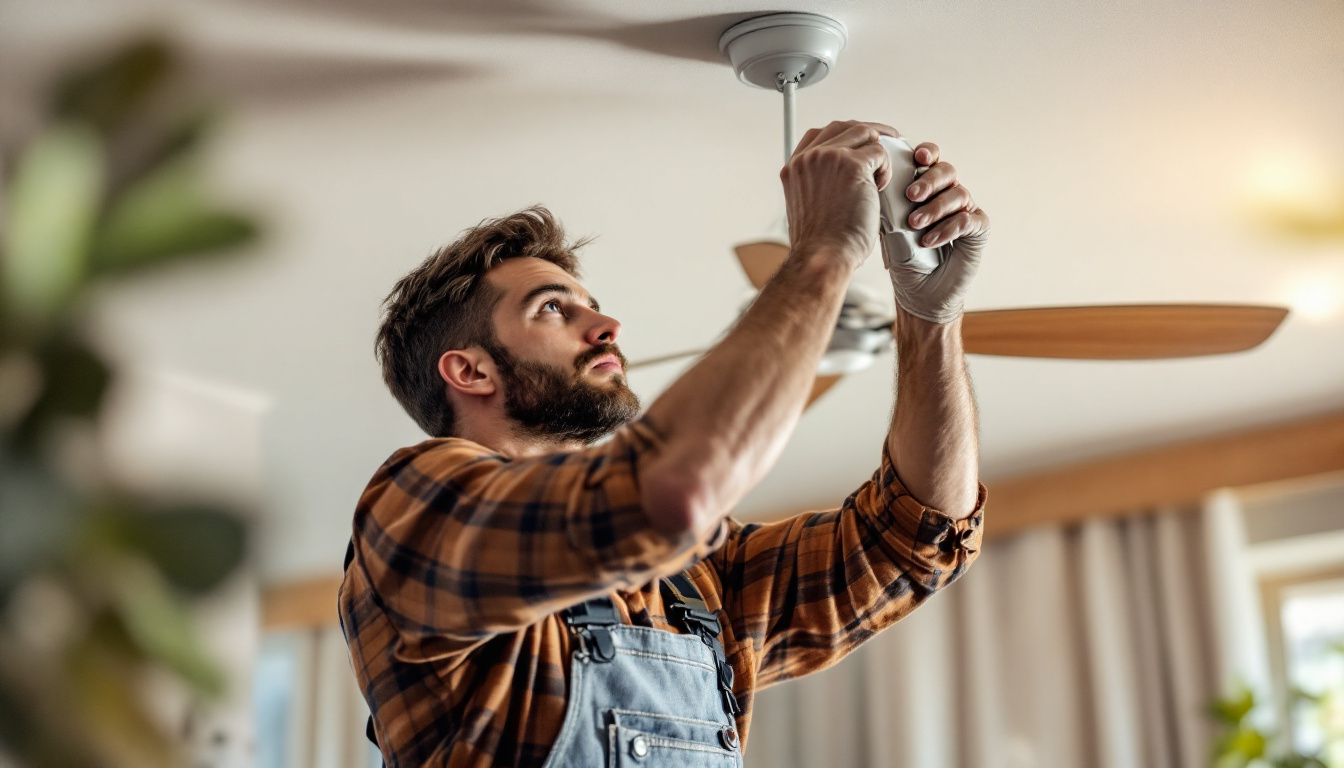

In the realm of lighting installation and maintenance, understanding the intricacies of ceiling light fan switches is crucial for lighting contractors. These switches not only control the illumination of a space but also manage the operation of ceiling fans, making them essential components in residential and commercial environments. This article delves into the best practices for lighting contractors when dealing with ceiling light fan switches, ensuring optimal functionality and customer satisfaction.
Ceiling light fan switches serve a dual purpose: they control both the ceiling light and the fan’s speed. This functionality is particularly beneficial in rooms where both lighting and airflow are necessary, such as living rooms, bedrooms, and kitchens. A thorough understanding of how these switches operate can significantly enhance the quality of work performed by lighting contractors. In addition to providing comfort, these switches can also contribute to energy efficiency, allowing homeowners to optimize their lighting and cooling needs based on the time of day and seasonal changes.
There are several types of ceiling light fan switches available on the market, each designed to meet specific needs and preferences. The most common types include:
Understanding these types will help contractors make informed decisions when recommending products to clients. For instance, remote-controlled switches are particularly popular for high ceilings or hard-to-reach fixtures, as they eliminate the need for ladders or additional tools. Furthermore, some advanced models come with smart technology integration, allowing users to control their ceiling fans and lights through mobile apps or voice commands, which can be a significant selling point for tech-savvy homeowners.
When selecting ceiling light fan switches, several features should be taken into account:
By considering these features, contractors can enhance the safety and efficiency of their installations. Additionally, it is essential to look for switches that offer user-friendly interfaces, as this can greatly improve customer satisfaction. Features such as illuminated buttons or tactile feedback can make it easier for homeowners to operate their fixtures, especially in low-light conditions. Moreover, energy-saving features, such as timers or dimmers, can help reduce electricity costs while providing customizable lighting options that suit various moods and activities.
Proper installation of ceiling light fan switches is vital for ensuring functionality and safety. Following best practices can help avoid common pitfalls and enhance the overall quality of the installation.
Before beginning the installation process, several preparatory steps should be taken:
Taking these steps can lead to a smoother installation process and reduce the risk of errors. Additionally, it’s wise to assess the space where the switch will be installed. Check for any obstructions, such as framing or insulation, that could interfere with the installation. Ensuring that you have adequate lighting in the area can also make a significant difference, as it allows for better visibility while working with small components and wiring.
Wiring is a critical aspect of installing ceiling light fan switches. Proper techniques can prevent future issues:
These wiring techniques can significantly enhance the reliability of the installation. Moreover, it is advisable to use high-quality materials, such as durable wire nuts and electrical tape, to ensure long-lasting connections. If you are installing a smart switch, consider the additional wiring requirements that may come with it, as some models may need a neutral wire for proper functionality. Taking the time to understand these requirements can save you from potential headaches down the line.
After installation, thorough testing is essential to ensure everything operates correctly:
Testing is a crucial step that should never be overlooked, as it ensures the safety and satisfaction of the client. In addition to the basic functionality check, consider running the fan at various speeds to confirm that the switch can handle the load without any flickering or interruptions. It’s also beneficial to observe the light for a few minutes to ensure it maintains a steady brightness, as fluctuations can signal underlying issues. If any problems arise during testing, don’t hesitate to revisit the wiring and connections to troubleshoot effectively.
Even with proper installation, issues can arise with ceiling light fan switches. Being prepared to troubleshoot these problems can save time and improve client relations.
Some common issues that may occur include:
Recognizing these problems early can help in addressing them effectively.
When issues arise, follow these troubleshooting steps:
These steps can help isolate the problem and determine the best course of action.
In some cases, issues may be beyond the scope of a simple fix. Knowing when to call for professional help is essential:
Recognizing the limits of one’s expertise is crucial for maintaining safety and quality in installations.
Providing customers with education and support regarding their ceiling light fan switches can enhance their overall experience and satisfaction. This not only builds trust but can also lead to repeat business and referrals.
Take the time to explain how the ceiling light fan switch operates:
By educating customers, contractors can empower them to use their installations safely and effectively.
After the installation, offering ongoing support can further enhance customer satisfaction:
Ongoing support fosters a positive relationship and encourages customers to return for future projects.
Ceiling light fan switches are integral to modern lighting solutions, and understanding their installation, troubleshooting, and customer support can greatly benefit lighting contractors. By adhering to best practices, contractors can ensure that their installations are safe, efficient, and satisfactory to clients. Furthermore, educating customers about their switches and offering ongoing support can enhance the overall experience, leading to lasting relationships and a successful business.
Ready to elevate your lighting installations with the best products on the market? Look no further than LumenWholesale for all your ceiling light fan switch needs. Our commitment to providing contractors with spec-grade lighting products at unbeatable wholesale prices means you can trust in the quality and value of every purchase. With our extensive selection that meets rigorous industry standards, you’ll find the perfect lighting solutions for your projects, big or small. Plus, enjoy the convenience of bulk buying with free shipping and no hidden fees. Don’t compromise on quality or cost—visit LumenWholesale today and experience the best in wholesale lighting at the value you deserve.

Discover the essential guide to waterproof wire connectors tailored for lighting contractors.

Discover essential strategies to sidestep common pitfalls in lighting projects with our comprehensive guide on light manufacturing.

Discover the essentials of architectural square linear lights in this insightful guide tailored for lighting contractors.

Discover the comprehensive guide to mastering RGB lighting with “RGB Light 15: The Ultimate Handbook for Lighting Contractors.” Uncover expert tips, innovative techniques, and essential tools to elevate your lighting projects and stay ahead in the industry.
Get notified when NEW deals are released.
Optimize your budget with wholesale discounts.
Only top-quality, specification-grade lighting products.
No additional costs at checkout - what you see is what you pay.
We understand the unique needs of contractors.